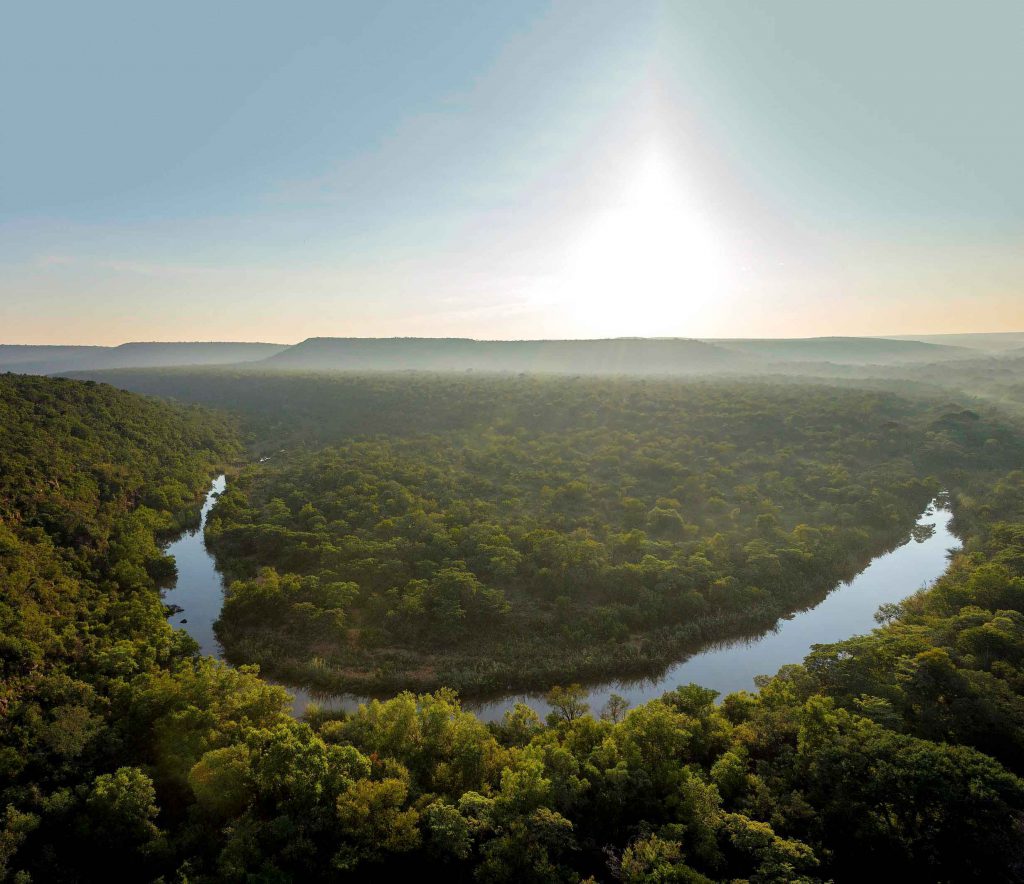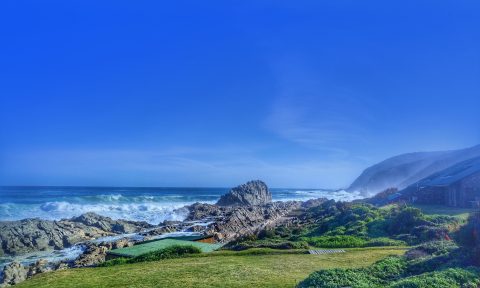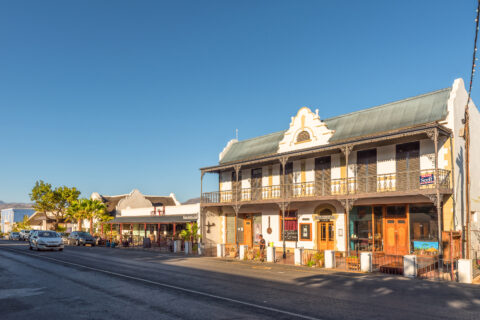Financial Mail Travel
Seven Reasons To Love Lapalala Wilderness
A river runs through it
Deep in Limpopo’s UNESCO-recognised Waterberg Biosphere, the Lapalala Wilderness is a pristine, little-traversed patch of wonder. Say the name slowly and you get a sense of what it feels like being there. This swathe of land restored to its former glory has been preserved, thanks largely to the pioneering vision of Clive Walker, a conservationist who founded the Environmental Wildlife Trust.
He dreamt of establishing a wilderness school in the Waterberg, and – thanks to the funds and business expertise of Dale Parker – a patch of land measuring 7 000 hectares was purchased in 1981. Since being established, the reserve has expanded to around ten times its original size – there are now 44 500 hectares of untamed emptiness.
Over the years, more than 70 000 children have passed through the groundbreaking school that Walker envisioned – it’s a place where youngsters get a taste for the joy of being immersed in nature.
And what nature it is! In every direction, this undulating landscape is dotted with high-rise kransesand covered in hills that drop away to lush plains and immense valleys. Its soil is rich red; its layered sandstone cliffs ochre orange; its rock pools crystal clear; and its grasslands and woodlands disappear into the far distance. Gaze across it from one of the rugged outcrops and you feel like you’re looking into eternity.
And, through it all, the namesake Palala River runs for 27 kilometres – some of the cleanest water in the country, with the option to cast for yellowfish from its banks, swim in the bubbling rapids, or simply idle on the rocks taking in the purest paradise.
Extraordinary animals do too
“We’re actually overstocked with game,” says Dave Jacobs, head ranger at Tintswalo Lapalala, the first lodge to have opened within the reserve. Such abundance explains why four Kalahari lions were recently added to the existing population. There’s also a large contingent of free-roaming wild dogs and 25 different leopard have been identified by camera traps – the reserve’s rocky ravines being their ideal terrain.
Back in 1990, Lapalala was the first private reserve to import black rhino from KwaZulu-Natal and has since then run a successful breeding programme, growing the population to become one of the best in the country. The breeding project is complemented by state-of-the-art security, which has helped stave off poaching incidents. It is possible to witness white and black rhino simultaneously – perhaps drinking at the opposite ends of a pool. And while rhinos are a landmark recovery species here, there are other cool drawcards, too. Roan – antelope seldom spotted in South Africa’s mainstream reserves – and bat-eared foxes are regularly seen. Even Capetonians familiar with mountain dassies(hyraxes), will get a kick out of seeing their tree-dwelling cousins eyeing them from the branches. Dave is an advanced birder and can fill you in on myriad questions about the 300-odd species found in the area, including such specials as red-billed oxpeckers, Denhem’s bustard and the violet ear waxbill. Aside from the game drives, there are opportunities to get out and look for smaller creatures on foot, discovering trees and insects, and the secret meaning of what’s in various piles of excrement.
Quintessential quarters
There’s always been a touch of drama – theatricality and a bit of a backstory – informing the themed décor dreamed up for the spaces at Tintswalo properties. In Cape Town, at the family-owned lodge group’s seaside Atlantic property, each suite is done out to evoke the atmosphere and charm of an island. At Lapalala, they’re designed to capture the essence of noteworthy African tribes. Owner-designer Gaye Corbett has long been an adventuresome traveller across the continent and has included in the décor personal photographs and objetscollected over the years from different destinations. They’re now displayed with great pride and affection, and each has a story to tell.
Beyond the interior detailing, each of the canvas-and-wood suites is raised off the ground with its own plunge pool and cane hanging pod seats and outdoor shower so you can watch the stars as you drench yourself before slinking between the softest linens on the lushest beds. It may sound like you’re swaddled in nothing but luxury, but just beyond your canvas walls are the harried grunts and guffaws of all sorts of wildlife, a glorious soundtrack that makes you feel far, far away.
The rooms are linked via a meandering boardwalk, so there’s a sense of a bit of a bushwalk just getting to the shared lounge and deck overlooking a highly-productive water hole – animals seem to be ceaselessly traipsing towards it. The deck is also one of several places where wonderful meals are served – food for which there’s no resistance. They set up potjieson open fires, and take you into the bush for breakfasts with porridge cooked over coals and tables bedecked with mimosas and green health drinks. Taking care of people is so deep in the DNA of the people who work here, it’s not long before you feel as though it is home.
Special experiences happen
If you can bear to give up your suite for a night, you can sign up for a sleep-out experience where you’ll really feel like you’re untethered from the world. It’s hardly slumming it, though – after dinner, you’ll be taken to what is essentially a super-fancy hide-like nest, elevated on stilts. You climb the steps and are left alone in a cushy, romantic space with only the sounds of the surrounding bush for company.
A picnic on the Palala’s banks – schmoozing on a massive Persian rug laid under a Bedouin stretch tent with full bar and amazing food – is just about as magnificent a lunchtime as you could possibly hope for. Take your swimmers along – in summer, Lapalala is thrillingly hot. Although in winter, you’d better brace yourself for serious chills. Also on offer are massages and spa treatments (in the bush, if you like), and a boat cruise – the light glistening off the water in the late afternoon is sublime. You’ll be sipping G&Ts while eyeing crocs and hippos and listening to the call of fish eagles floating above.
Guiding beyond the norm
Yes, you will see plenty on game drives, but when Dave or another member of his team offers to take you out on a walk, jump at the chance. It is so freeing to trek through this scintillating bundu, looking for the outlines of paws and hoofs and claws in the dirt, and getting an up-close understanding of cat scat or hyena turds. These on-the-ground clues afford a clearer picture of what goes on when humans aren’t looking. On walks like these you can learn about the lavender feverberry, which Bushmen used as a natural deodorant, and a fern that – when eaten – will clear up virtually any digestive tract problem. And there’s the gloriously named resurrection bush, which was used as an all-round health infusion. While walking with Dave, you’ll likely also get a demonstration of how hyenas mark their territory using something called “anal pasting”, which is just as revolting as it sounds – and is a great reason not to chew on grass plucked in the bush.
You can set off on foot to track rhino, or meet Metsi, a rhino who is blind in one eye. There are also conservation activities that you can join for a fee – some include riding with wildlife vets in helicopters and being part of the action.
You’ll connect with true originals
Dave not only knows his wildlife and has a barrage of facts about trees and shrubs and spider webs up his sleeves, but among the most fascinating excursions is a short walk – down a bank, across the river stepping over rocks, and then up some boulders and into an open-faced rock cliff where there are San paintings believed to be 3 000 years old and well preserved in black and ochre and faded burgundy. Dave will decode what’s on the wall, even sharing a theory suggesting that cave paintings were used as a form of sex education, a way of teaching teenage boys about the birds and the bees. And then, of course, there’s the mystery of the shaman depicted with an hyperbolically engorged member. Is it some ego display? Or does it convey ritualistic meaning? While you ponder that, Dave will decipher another piece of the puzzle: a shaman who has trance-danced himself into a dream state somewhere up in the clouds. And, up there, he has slaughtered a kudu and the blood drips down like rain. It’s believed that – to these people – there were two types of rain. Female rain would last three solid days. Male rain, however, was a mere three-hour thunderstorm.
Silence is yours for the taking
It is quite rare being in a place where there are no pylons and no permanent electric buzz. Although you can connect to Wi-Fi, Lapalala is entirely off-grid, so your lights are solar-powered and water is heated by the sun too. And, at night, there’s a chance to gaze up at the stars – there’s zero light pollution, a telescope to bring the moon closer, and someone to unravel the constellations for you. It’s the kind of deep inner-core detox that stays with you for long after you go home to the bustle. But the longing to return stays forever.






 Sign-up and receive the Business Media MAGS newsletter OR SA Mining newsletter straight to your inbox.
Sign-up and receive the Business Media MAGS newsletter OR SA Mining newsletter straight to your inbox.